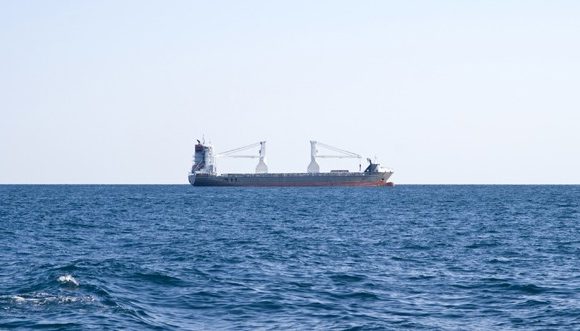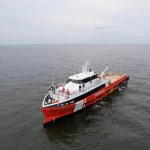The Power of the Sea: Marine Energy and Its Potential to Reduce Dependence on Fossil Fuels

The mighty seas that span our planet have long captivated our imaginations. They hold within their depths a world of mystery, teeming with life and unfathomable power. While we have sailed their surfaces and exploited their bounties, it is only recently that we have begun to tap into their tremendous potential as a source of clean and renewable energy.
In a world grappling with soaring energy demands and the pressing battle against climate change, marine energy, also known as ocean energy, emerges as a ray of hope, promising to be a viable alternative to fossil fuels.
Marine energy encompasses various forms of energy derived from the ocean, including tidal power, wave power, and ocean thermal energy conversion (OTEC). These technologies use the immense power of the ocean’s waves, tides, and temperature gradients, converting them into usable electricity.
Tidal power
One of the most prominent forms of marine energy is tidal power. Tides are created by the gravitational pull of the moon and the sun, and they represent a predictable and reliable source of energy. Tidal power plants use turbines placed underwater to capture the kinetic energy of the tides as they ebb and flow. The United Kingdom, with its vast coastline, is at the forefront of tidal energy development. The world’s first large-scale tidal power project, the MeyGen tidal stream array, is located in the Pentland Firth, Scotland. This project has the potential to power up to 175,000 homes, showcasing the immense energy-generating capacity of the seas.
Wave power
Wave power is another exciting avenue within marine energy. Waves are a result of the wind’s interaction with the ocean surface, and they carry an enormous amount of energy. Wave energy converters, such as buoys or oscillating water columns, capture the motion of waves and convert it into electricity. Portugal’s Aguçadoura Wave Farm, the world’s first commercial wave farm, has demonstrated the viability of wave power generation on a large scale. The farm, located off the coast of Portugal, has three Pelamis Wave Energy Converters that can generate up to 2.25 megawatts of electricity. This success has sparked interest in further developing wave power projects across the globe.
Thermal energy conversion
Ocean thermal energy conversion (OTEC) is a more nascent technology that harnesses the temperature difference between warm surface water and cold deep ocean water. This temperature gradient generates power through a system that employs a working fluid with a low boiling point. While OTEC is still in the early stages of development, it holds great promise for regions with access to deep, cold ocean currents. Potential applications of OTEC include desalination, aquaculture, and the production of hydrogen.
The advantages of marine energy
The beauty of marine energy lies not only in its renewable nature but also in its predictability. Unlike wind or solar power, which can fluctuate and are subject to weather conditions, marine energy is relatively stable and reliable. Tidal patterns and wave behaviour can be accurately predicted years in advance, allowing for efficient planning and integration into the power grid. This predictability provides a stable baseload power source, complementing other intermittent renewables and reducing our dependence on fossil fuel-generated electricity.
Furthermore, developing and deploying marine energy technologies present significant economic opportunities. The marine energy industry has the potential to create thousands of jobs in manufacturing, installation, and maintenance. As countries invest in the development of their marine energy resources, they foster a new sector that can drive economic growth while simultaneously addressing climate change. For example, a study conducted by the European Marine Energy Centre estimated that the tidal stream energy sector in the UK alone could generate £1.4 billion in gross value added (GVA) and create nearly 20,000 jobs by 2030. This highlights the potential for marine energy to not only reduce our dependence on fossil fuels but also stimulate economic development and job creation.
Another advantage of marine energy is its minimal environmental impact compared to traditional fossil fuel extraction and combustion. By using marine power, we can reduce CO emissions and mitigate the effects of climate change. Marine energy technologies can produce clean electricity without the release of harmful pollutants or greenhouse gases, offering a sustainable solution to our energy needs.
In addition to its environmental benefits, marine energy also has the potential to enhance energy security. Many countries heavily rely on imported fossil fuels, making them vulnerable to price fluctuations and geopolitical tensions. Marine energy provides a domestic and indigenous source of power, reducing the reliance on foreign energy imports and improving energy resilience.
The challenges
While marine energy holds immense promise, there are still challenges to overcome. The cost of developing and deploying marine energy technologies remains relatively high compared to conventional energy sources. However, as technology advances and economies of scale are achieved, the cost of marine energy is expected to decrease. Governments and private investors must continue to support research, development, and commercialization efforts to drive down costs and make marine energy more economically viable.
Another hurdle is the potential environmental impact of marine energy projects on marine ecosystems. It is crucial to carefully assess and minimise the potential risks to marine life during the planning and implementation stages of marine energy installations. By conducting thorough environmental impact assessments and implementing mitigation measures, we can ensure that marine energy projects coexist harmoniously with the marine environment.
Statistics and Facts
- The MeyGen tidal stream array in Scotland, the world’s first large-scale tidal power project, has the potential to power up to 175,000 homes.
- The Aguçadoura Wave Farm in Portugal, the world’s first commercial wave farm, has three Pelamis Wave Energy Converters that can generate up to 2.25 megawatts of electricity.
- The tidal Stream Energy sector in the UK is estimated to generate £1.4 billion in gross value added (GVA) and create nearly 20,000 jobs by 2030.
- Marine energy technologies produce clean electricity without the release of harmful pollutants or greenhouse gases, contributing to the mitigation of climate change.
- Marine energy provides a domestic and indigenous source of power, reducing reliance on foreign energy imports and enhancing energy security.
- The cost of developing and deploying marine energy technologies is expected to decrease as technology advances and economies of scale are achieved.
- Thorough environmental impact assessments and mitigation measures are necessary to ensure the coexistence of marine energy projects and marine ecosystems.
Conclusion
In conclusion, marine energy represents a compelling solution to reduce dependence on fossil fuels and combat climate change. Tidal power, wave power, and ocean thermal energy conversion harness the immense power of the oceans to generate clean and renewable electricity.
With predictable and reliable energy generation, marine energy complements other intermittent renewables, providing a stable baseload power source. Additionally, marine energy offers economic opportunities, creating jobs and driving economic growth. By embracing marine energy technologies, we can reduce greenhouse gas emissions, enhance energy security, and pave the way towards a more sustainable future.
Resources
Eight Things To Know About Marine Energy (Hint: It’s Not Just Ocean Energy)
What Is Marine Energy?















